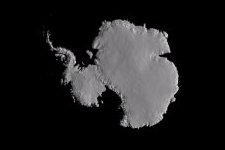
FACTS ABOUT ANTARCTICA

Antarctica at its widest is 5,500 km across -
Antarctica is 14 million km2 in area, which is 50% larger than the U.S.A.
Antarctica is the world's highest continent.
There is an active volcano, called Mount Erebus on Ross Island in Antarctica.
Back mountains
Back Libya & Asia
_________
State now
The ice cap is up to 4.5 km deep, more than half the height of Mount Everest.
The coldest ever temperature to be recorded in Antarctica was -89.6 degrees.
The ice can be 3 km deep.
There are dry valleys in Antarctica where there is no snow and lichens grow.
70% of the world's fresh water is frozen in the Antarctic ice cap. If it melted the sea level would rise 50 m.
Antarctica remains the least known of all the continents.
___________
Antarctica's big bang
Ian Anderson
Evidence of one of the world's most violent volcanic eruptions has been uncovered in Antarctica.
Scientists drilling into sediment off the coast of the frozen continent say the explosion, which took place 25 million years ago, blasted 30 cubic kilometres of ash and volcanic debris 50 kilometres or more into the stratosphere.
This would make the blast about as big as the eruption of Krakatoa in Indonesia in 1883.
The deposits…. are about 25 million years old. Volcanologists believe the material could have come from Mount Morning, an old complex of volcanoes 120 kilometres to the south, on the edge of the Trans-Antarctic Mountains.
"We had no idea that Antarctica's volcanic history included an event as dramatic as this one," says Peter Barrett, a geologist from the Victoria University of Wellington in New Zealand.
From New Scientist, 21 November 1998
NEW DINOSAUR FINDS IN ANTARCTICA PAINT
FULLER PICTURE OF PAST ECOSYSTEM
A team of Argentinean and U.S. scientists has found fossils of a duck-billed dinosaur, along with remains of Antarctica's most ancient bird and an array of giant marine reptiles, on Vega Island off the eastern side of the Antarctic Peninsula.
The tooth of a duck-billed dinosaur, or hadrosaur, was found in sands about 66-67 million years old, from the Cretaceous period (about 1-2 million years before the asteroid impact that contributed to the extinction of the dinosaurs).
Sergio Marenssi of the Instituto Antartico Argentino and Judd Case of St. Mary's College, California head the team that found the fossils.
"This find allows us to paint a much fuller picture of what life was like in Antarctica at the time," commented Scott Borg, NSF program manager for Antarctic geology and geophysics.
"The climate was obviously very different when these animals lived.
There must have been a lot of vegetation to support these large plant-eaters. The find implies a complicated and robust ecosystem."
The region around Vega Island is extremely rich in both terrestrial and marine fossils, and the only such fossil throve in Antarctica to span the boundary of the Cretaceous and Tertiary periods, the time when the dinosaurs were wiped out.
Also collected were numerous partial skeletons of gigantic marine reptiles, plesiosaurs and mosasaurs.
According to James Martin, a South Dakota School of Mines ,these specimens included several juveniles which are very rare in the fossil record.
The group also includes members from the Smithsonian Institution and Argentina's Museo de la Plata.
_______________